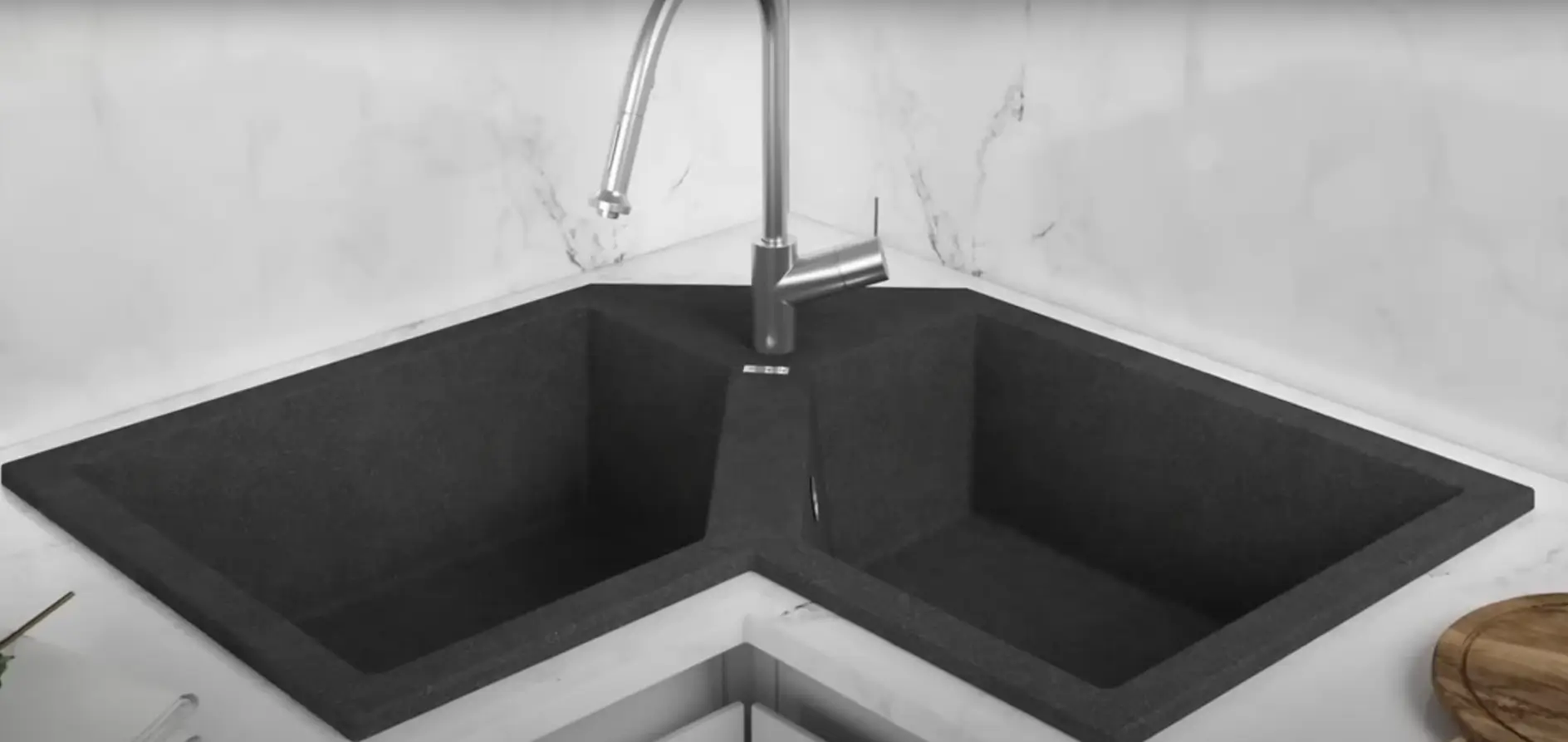Many homeowners want to update their kitchen sink but worry about the cost of replacing the whole countertop. This common problem can be challenging, but there’s good news. You can often replace a kitchen sink without changing the entire counter.
Replacing just the sink is usually cheaper and faster than redoing the whole countertop. It’s a smart way to refresh your kitchen’s look without a major overhaul. This article will guide you through the process of swapping out your sink.
We’ll cover what to consider and how to do it right. Are you interested in learning how to update your sink?
Key Takeaways
- You can often replace a kitchen sink without changing the whole countertop, saving time and money.
- The new sink must match the size, shape, and mounting style of the old one to fit the existing countertop opening.
- Countertop material affects sink replacement options. Natural stone and quartz offer more flexibility than laminate.
- Careful removal of the old sink and proper installation of the new one can prevent damage to the countertop.
- Updating just the sink can refresh your kitchen’s look without a full remodel, but proper planning is key to success.
Key Considerations Before Replacing a Kitchen Sink
Replacing a kitchen sink needs careful thought. You must check the size, shape, and mounting style of your new sink to ensure it fits your current countertop.
Size and Shape Compatibility
Size matters when replacing a kitchen sink. A new sink must fit the existing countertop opening. If you want the same size, look for a sink with matching dimensions. This makes the swap easier and avoids cutting the countertop.
For a bigger sink, you’ll need to enlarge the opening. This works best with solid surfaces like granite or quartz. These materials can be cut and polished to fit a larger sink. Smaller sinks often require a new countertop, as filling gaps is tricky.
Shape is just as crucial as size. Most sinks are rectangular, but some are round or oval. Stick to the current shape for a simple replacement. Changing shapes may mean altering the countertop cutout.
This can be complex and costly. Always measure your current sink carefully before buying a new one. This ensures a good fit and smooth installation.
Mounting Style and Countertop Material
After considering size and shape, mounting style and countertop material play key roles in sink replacement. Sinks come in two main types: drop-in and undermount. Drop-in sinks sit on top of the counter, while undermount sinks attach below.
Changing from one type to another may require expert help. The countertop material also affects your options. Natural stone and quartz countertops can last for decades but may need updates for style.
Laminate counters might limit your choices due to their construction. Always check your current countertop’s condition before deciding on a new sink.
Can You Replace Countertops Without Replacing Cabinets?
Replacing countertops without changing cabinets is possible and can save money on kitchen updates. This option works well if your cabinets are in good shape and can support new countertops.
Most countertop swaps take less than a day, causing little disruption to your home life. But before you decide, think about your future plans. If you want to redo your whole kitchen soon, waiting might be better.
Also, make sure your cabinets are strong enough for heavier materials like granite or quartz. A pro can check if your cabinets can handle new counters without issues.
Step-by-Step Guide to Replacing a Kitchen Sink Without Damaging the Countertop
Replacing a kitchen sink without damaging the countertop is possible with careful planning and execution. Our step-by-step guide walks you through the process, from removing the old sink to installing the new one safely.
Removing the Old Sink
To remove your old sink, start by turning off the water supply. This step is crucial to avoid any leaks or water damage. Next, disconnect the plumbing from the sink. You’ll need to detach the drain pipes and faucet connections.
Once the plumbing is free, carefully cut through the caulk or sealant around the sink’s edges.
Lift the sink out of the countertop opening with caution. Sinks are often firmly attached to prevent leaks, so you may need some extra muscle. Clean the countertop cutout thoroughly to prep for the new sink.
Remove any leftover caulk or debris. If you notice any damage during removal, you might need to replace the entire countertop.
Installing the New Sink
Place the new sink into the opening. Make sure it fits snugly and lines up with the existing holes. Apply a bead of silicone around the edge to create a watertight seal. Secure the sink in place using the clips or brackets that came with it.
Tighten them evenly to prevent warping. Next, reconnect the plumbing. Attach the faucet, drain, and garbage disposal if you have one. Turn the water supply back on and check for leaks.
Run water through all parts of the sink to test it fully. Fix any drips or loose connections right away. With care and attention, you can install a new sink without damaging your countertop.
Conclusion
Replacing a kitchen sink without changing the countertop is often possible. The key is to match the new sink’s size and style to your current setup. Careful planning and the right tools make this a manageable DIY project for many homeowners.
With some effort, you can update your kitchen’s look and function without a full remodel. It’s important to check your countertop material and sink mounting type before starting the job.
FAQs
1. Is it possible to replace a kitchen sink without replacing the countertop?
Yes, you can replace your kitchen sink without replacing the countertop. This depends on factors like the sink type and countertop material. For top-mount sinks, it’s often easier. Undermount sinks may need more care to avoid damage to the counter.
2. What types of sinks are easiest to replace without changing the counter?
Drop-in or top-mount sinks are the easiest to replace without removing the countertop. These sit on top of the counter and can be lifted out. Farmhouse or apron sinks may need counter changes. Undermount sinks can be tricky but possible with care.
3. How do I know if my countertop can handle a new sink?
Check your current countertops for strength and condition. Granite countertops are sturdy and can often handle new sinks. Laminate may need extra support. Look at the sink’s size and weight. Make sure the new sink fits the existing drain hole and doesn’t need a larger cut.
4. Can I install an undermount kitchen sink without replacing the countertop?
Installing an undermount kitchen sink without replacing the countertop is possible but challenging. It requires careful removal of the old sink and precise installation of the new one. You may need a plumber or expert to avoid damage to your countertop during this process.
5. What should I consider before trying to replace just the sink?
Think about the sink’s age, your DIY skills, and the tools needed. Check if you want a larger sink or a different style like a farmhouse sink. These may need counter changes. Look at your budget and time. Sometimes, a full remodel might be better if you’re changing the look of your kitchen a lot.
6. Are there risks in replacing a sink without changing the counter?
Yes, there are risks. You might damage your countertop when removing the old sink or fitting the new one. There’s also a chance the new sink won’t fit perfectly, leaving gaps. Water damage can happen if not sealed right. If you’re not sure, it’s best to ask a pro for help with the sink installation.






